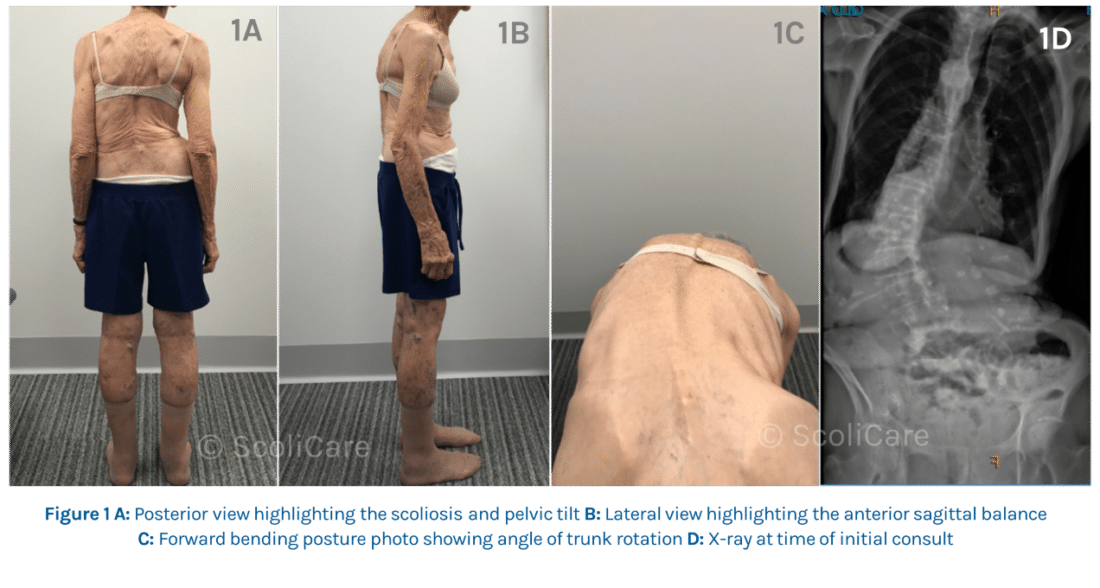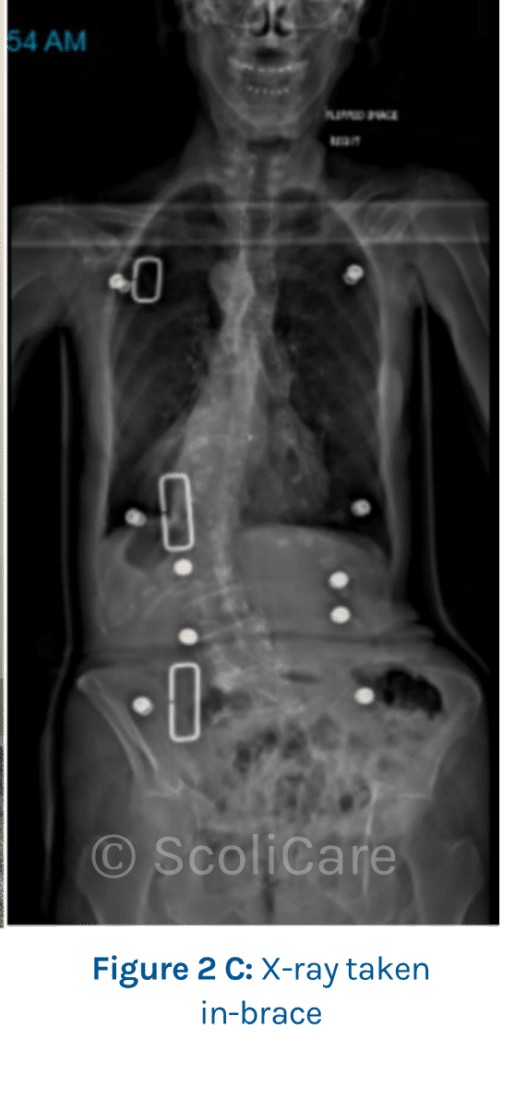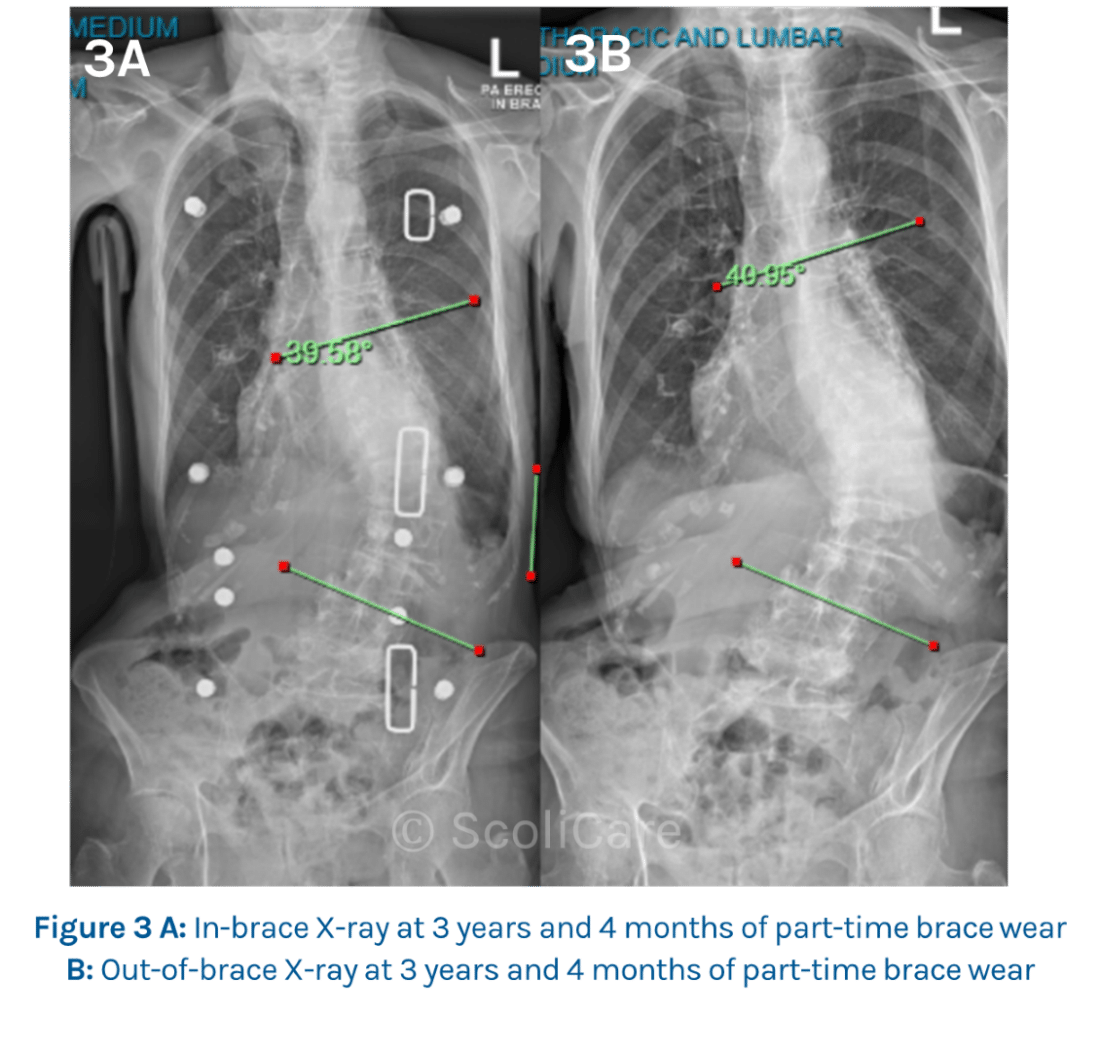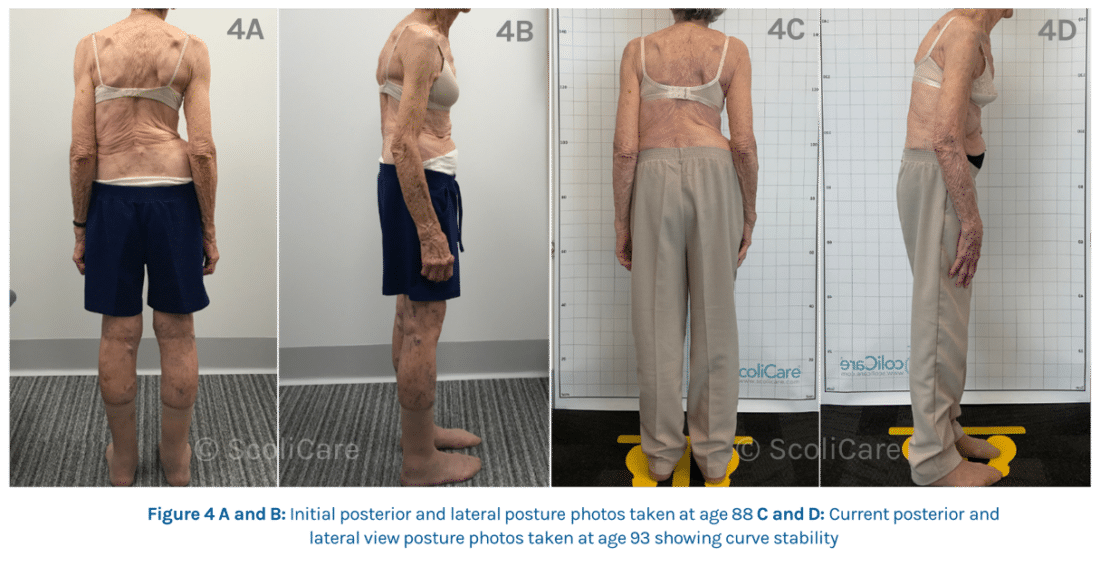Female aged 88 years with a degenerative de novo scoliosis because of earlier spinal trauma many years earlier.
Improvement of a severe post-traumatic de novo degenerative scoliosis using 3D designed custom scoliosis brace in an older female
Summary:
This case details the successful management using a a 3D designed custom scoliosis brace, of an older female with a degenerative de novo scoliosis because of earlier spinal trauma many years earlier, and a pelvic obliquity. The patient initially presented to the ScoliCare clinic at age 88 with a degenerative left lumbar curve. There were obvious distortions to the patient’s posture – specifically right coronal and sagittal imbalance and associated waist curve asymmetry.
The patient was prescribed a 3D custom designed rigid thoracolumbosacral orthosis (TLSO) for part-time wear of 6-8 hours per day. After 4 years and 9 months of bracing the patient’s curve has remained stable along with their posture without further curve progression.
Case Background
The patient was 88 years old when she initially presented to our clinic due to her back pain and concerns over her posture worsening. She had not officially been diagnosed at the time of presentation but reported a history of her initial back problems starting 60 years previously whilst working in nursing.
Examination Findings
The examination revealed some significant postural changes. Specifically, notable was a significant translation both to the right and anteriorly, as well as a pelvic obliquity down on the left and a large angle of trunk rotation (Figure 1 A, B and C). X-rays taken at the time showed a left lumbar scoliosis with the apex at L2 (Figure 1D).

Intervention
As the patient was diagnosed with a post-traumatic de novo degenerative scoliosis with unstable demonstrated progression, she was prescribed a custom-made scoliosis brace. X-ray taken in-brace shows curve improvement (Figure 2C).
A daily scoliosis specific exercise program (ScoliBalance) was designed for the patient to support the corrections being made by the brace. New exercises were added to the program as the patient progressed. Regular follow-ups were scheduled to ensure that A) the patient was responding to the treatment, and B) to monitor compliance with the bracing and exercise program.

Outcomes
The patient’s spine responded favourably to the treatment with the curve stabilized at 40° in-brace and 41° out of brace after 3 years and 4 months of part-time brace-wear (Figure 3A and 3B).
The patient’s posture remained stable from the time of initial presentation (Figure 4A and 4B) after 4 years and 9 months of part-time brace wear from the age of 88 to 93 (Figure 4C and 4D).


Discussion
Degenerative De Novo scoliosis is one of the scoliosis types that can be treated using a 3D designed custom scoliosis brace, depending on the nature of the curve. The main aim of treatment with these types of curves is to halt further curve progression as commonly these curves are unstable and present with significant changes in coronal and sagittal balance as well as a spondylolisthesis or lateral listhesis, resulting in further spinal instability and higher risk for curve progression.
This case highlights that treatment can be beneficial at any age and provide older patients with an enhanced quality of life.
Conclusion
While there is currently the need for further research in the use of bracing in adult degenerative de novo scoliosis, this case demonstrates the stabilization of a severe degenerative scoliosis in an elderly patient using a custom made scoliosis brace
© ScoliCare
NB: Results vary from case to case. Our commitment is to recommend the most appropriate treatment based on the patients type and severity of scoliosis.

